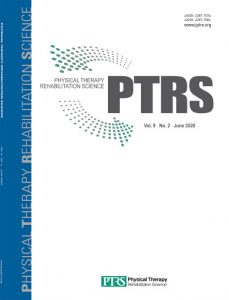Publications

The Effects of Combined tDCS and Sling Exercise on Cervical Muscle Properties: A Randomized Controlled Trial
Authors: Mingyun Ko
Affiliations: Department of Physical Therapy, Gwangju Health University, Gwangju, Republic of Korea
Journal: Physical Therapy Rehabilitation Science - September 2025, Volume 14, Pages 369-379 (DOI: 10.14474/ptrs.2025.14.3.369)
-
Field & Applications:
- Medical
- Treatment evaluation
- Physiotherapy
- Musculoskeletal disorder
- Neuromuscular control
- Balance / Postural control
Objective: Neck instability and altered muscle activation are frequent contributors to musculoskeletal dysfunction. While sling exercise enhances proprioceptive input and neuromuscular control, transcranial direct current stimulation (tDCS) provides cortical modulation; however, their combined effects remain unclear. Therefore, this study compares the immediate effects of tDCS combined with a sling on cervical muscle changes, verifying peripheral and central approaches while exploring clinical applicability.
Design: Randomized, controlled, single-blind, assessor-blind trial.
Methods: Forty-five healthy adults aged 20-30 years without recent neck or shoulder pain were randomly assigned to three groups: sling exercise (SL), tDCS combined with sling (tSL), and tDCS combined with stabilization exercise (tST). The interventions had a duration of 20 minutes, and the outcomes were assessed pre- and immediately post-treatment. Muscle tone, stiffness, and elasticity of the sternocleidomastoid (SCM) and upper trapezius (UT) were primarily measured. The secondary outcomes were SCM and UT thickness by musculoskeletal ultrasonography and pressure pain threshold (PPT) of the UT by algometry.
Results: All groups had significant reductions in tone, stiffness, elasticity, and muscle thickness (p<0.05) with no statistically significant between-group differences. The tSL group had the largest effect sizes, including left SCM tone (p<0.01, d=0.87), right SCM elasticity (p<0.05, d=0.85), and left UT tone (p<0.05, d=0.68). There were no statistically significant changes in PPT.
Conclusions: Peripheral (sling) and central (tDCS) interventions acutely improved cervical muscle mechanical properties, and their combination had the strongest effects, supporting the potential use of integrated neuromodulation and exercise approaches in future rehabilitation studies.
Keywords: transcranial direct current stimulation, neck muscles, exercise therapy, sling, muscle tonus
This study analyzed immediate effects of sling exercise and tDCS applied individually or in combination on cervical muscle physical properties in young adults without neck-shoulder pain. Results showed significant improvements in muscle tone, stiffness, elasticity, and thickness except pressure pain threshold, with tSL group demonstrating the most pronounced improvements. These findings indicate combined peripheral sensory and central nervous stimulation can positively influence biomechanical responses including muscle relaxation and tissue recovery compared to individual interventions. This study was limited to a single-session intervention conducted in healthy young adults without long-term follow-up, which restricts the generalizability of the findings. Future research should include diverse clinical patient populations across age groups, utilizing repeated intervention applications and precision analysis tools to more clearly establish this combined intervention’s effectiveness and sustainability.


